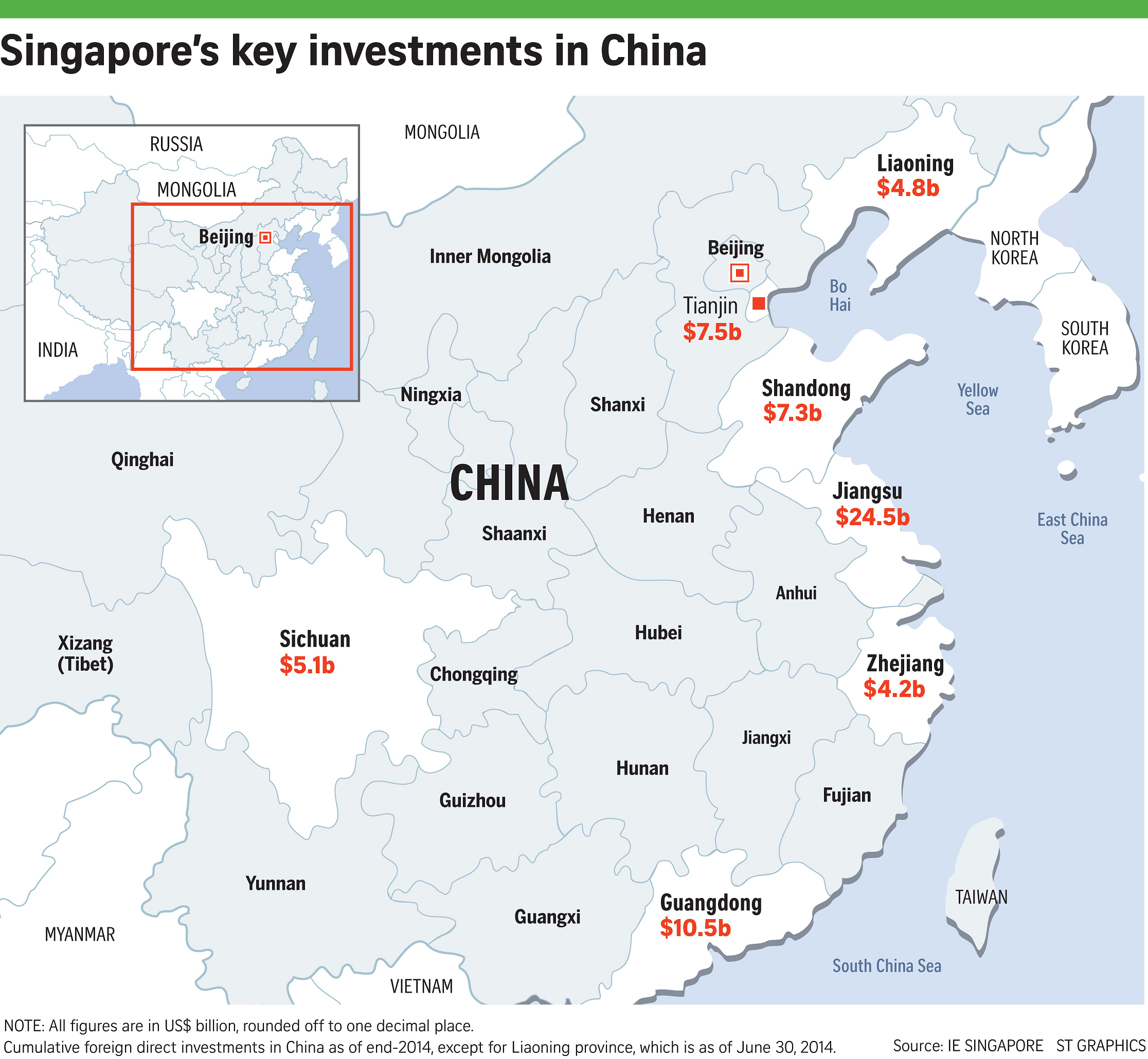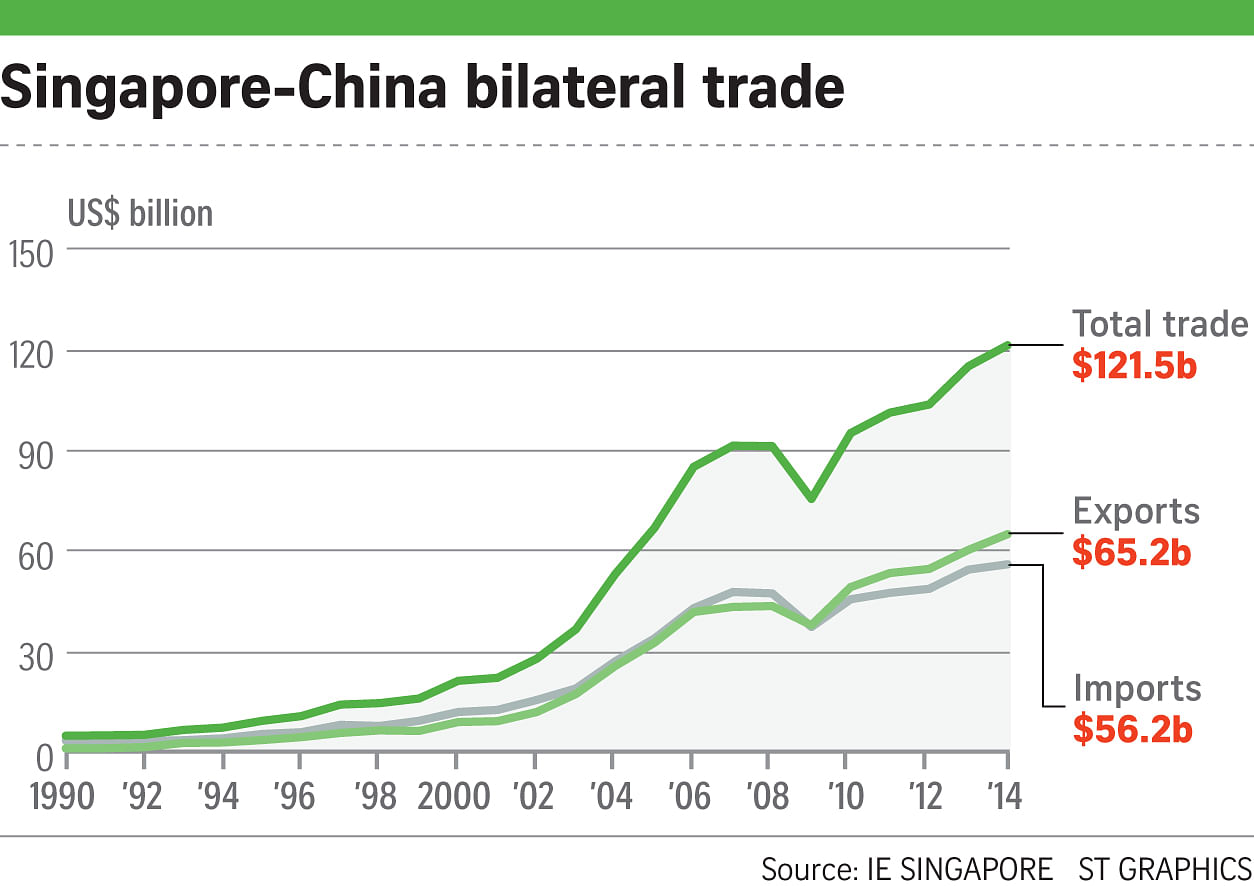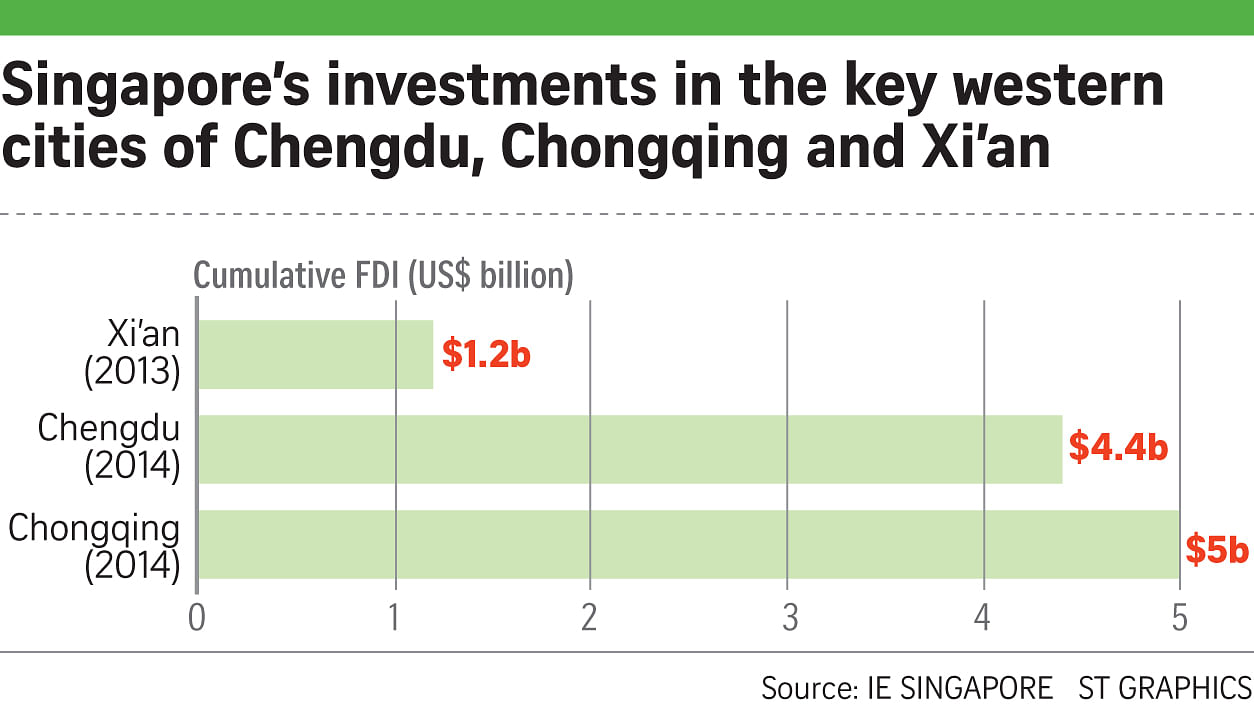Trade and investment between Singapore and China have shot up since formal ties were established 25 years ago, with even more growth tipped once the free trade agreement is upgraded and the next joint project gets under way.
Much will be riding on Chinese President Xi Jinping's trip as he arrives today on his seventh visit to Singapore, and his first as President.
The business community is hoping to hear more about upgrades to the China-Singapore free trade agreement that came into force in January 2009. Others are awaiting details of the third proposed joint project, which is tipped to be in either Chengdu, Chongqing or Xi'an. This could help Singapore firms tap the new wave of growth in the western region of China.
DBS economist Irvin Seah notes that Singapore's economic relationship with China will "only continue to strengthen and not diminish in the near term". China is an important driver for the local economy, a point underlined when it overtook the United States to become Singapore's largest non-oil export destination in 2010, he adds.
In terms of total trade, China surpassed Malaysia to become Singa-pore's largest trading partner in 2013. Trade volume between the two countries reached $121.5 billion last year, a 23-fold increase from $5.2 billion in 1990, according to IE Singapore data.
While Singapore has benefited from China's burgeoning growth, the close relationship also has its challenges as seen by the drag on the economy here due to a slowing China, says Mr Seah.
However, he maintains that Singapore will remain an important financial hub for Chinese companies and their regional operations as more of them make forays into South-east Asia.
This is evident in the growing volume of yuan transactions and the rising size of yuan deposits here.
Both countries have stepped up cooperation in the financial sector. Singapore's central bank doubled the size of its bilateral currency swap facility with its China counterpart to 300 billion yuan (S$66.2 billion) in March 2013 to promote financial stability and trade.
Singapore also became the first offshore yuan hub outside Greater China that year with the Industrial and Commercial Bank of China (ICBC) being designated as the only bank to clear offshore yuan transactions in the country.
Within a year, Singapore overtook London to hold the largest share of the world's yuan payments outside Greater China last year.
Both countries took the financial cooperation a step further last month when they inked a deal to broaden the cross-border yuan channels to Suzhou and Tianjin.
Under the new rules, companies in the two Chinese cities can now borrow yuan from banks in Singapore. The companies are also able to repatriate 100 per cent of the funds raised through issuing yuan bonds in Singapore.
These are seen as significant moves for Singapore as a financial centre as banks here can now play a bigger role in trade and investment flows between China and the region and beyond.
In addition to trade and financial cooperation, Singapore's deep economic ties with China are also underscored by the size of its investment in the country. Last year, Singapore was China's largest foreign investor for the second consecutive year, with investments totalling US$5.8 billion (S$8.2 billion) in more than 700 projects, says IE Singapore.
Many attribute Singapore's large investments in China to the two flagship government-led projects - the Suzhou Industrial Park and the Sino-Singapore Tianjin Eco-city - which helped pave the way for Singapore businesses to expand their operations in China.
Local companies have been attracted to invest in coastal provin-ces such as Jiangsu, Zhejiang, Shandong and Guangdong.
Singapore has set up seven bilateral business councils in these provinces, where more than 70 per cent of its investments from here are concentrated, to promote greater cooperation at the regional level.
Each of these business councils is represented by a minister from Singapore and a top provincial official from China. The councils usually meet once a year.
Since 2010, Singapore firms have also been encouraged to invest in "private investor-led, government-supported" industrial park projects in different parts of China. These include the Guangzhou Knowledge City, the Jilin Food Zone, the Singapore-Sichuan Hi-Tech Innovation Park and the Nanjing Eco High-Tech Island.
Mr Yew Sung Pei, assistant chief executive of IE Singapore, says there is a trend of more Singapore companies venturing into the services industry in China, in sectors such as education and healthcare.
He sees "increasing opportunities" spurred by China's new growth strategies spelt out by President Xi's "One Belt, One Road" initiative and Premier Li Keqiang's "Internet-plus" digital drive.




